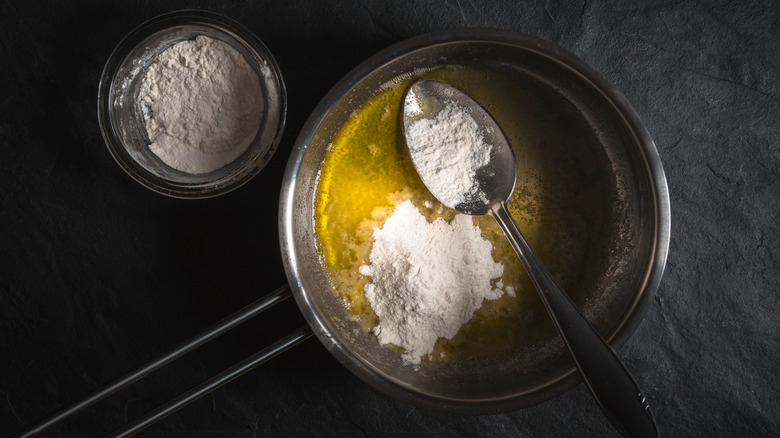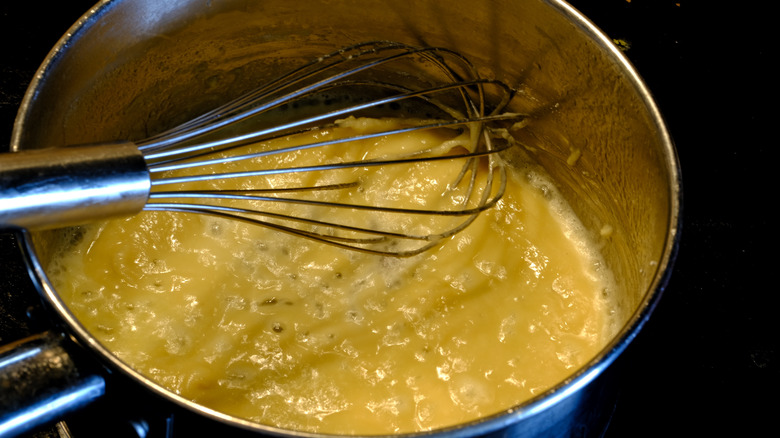The Biggest Roux Mistake You're Making
The key to mastering French cooking, according to Food52, is to learn the cuisine's five mother sauces: béchamel, velouté, espagnole, hollandaise, and tomato sauce. And the foundation of four of the five French mother sauces is roux, a mixture of flour and fat.
According to Bon Appétit, making a roux is a simple process. Mix together equal parts of flour and fat over low to medium heat until it's uniform and the desired color (usually white, brown, or dark). Done right, the flour-fat paste can act as a smooth thickening agent for any liquid that is free from lumps of flour (via Food Network). When cooked longer, roux can have a deeper color and a toasty, nutty flavor of its own.
Although making a roux can seem simple, several things can go wrong. And the biggest mistake is not paying enough attention to a couple key details.
Pay lots of attention to the roux's color and aroma
While practice is the key to perfecting a smooth roux, Bon Appétit says that the most common mistake is not paying enough attention to its color and aroma. For its aroma, roux should be cooked until it stops giving off the smell of raw flour. When using butter as the fat, the site says to lower the heat as soon as it releases the toasty, nutty smell that signifies it browning. Cooking for longer risks burning the roux.
Another common mistake is not paying attention to the color of the roux. Cook it until it gains a certain shade of color depending on what you're using it as a base for. White roux — cooked just enough to eliminate the raw taste of flour — is used to thicken béchamel sauces and white gravies. When cooked longer the roux becomes darker with a deeper flavor, but its effectiveness as a thickening agent begins to lessen (via MasterClass). Thus, a brown roux is ideal for typical gravies and is the base for Espagnole, but it won't thicken sauces as effectively as a white roux. Dark brown roux is typically used in Creole and Cajun food.

